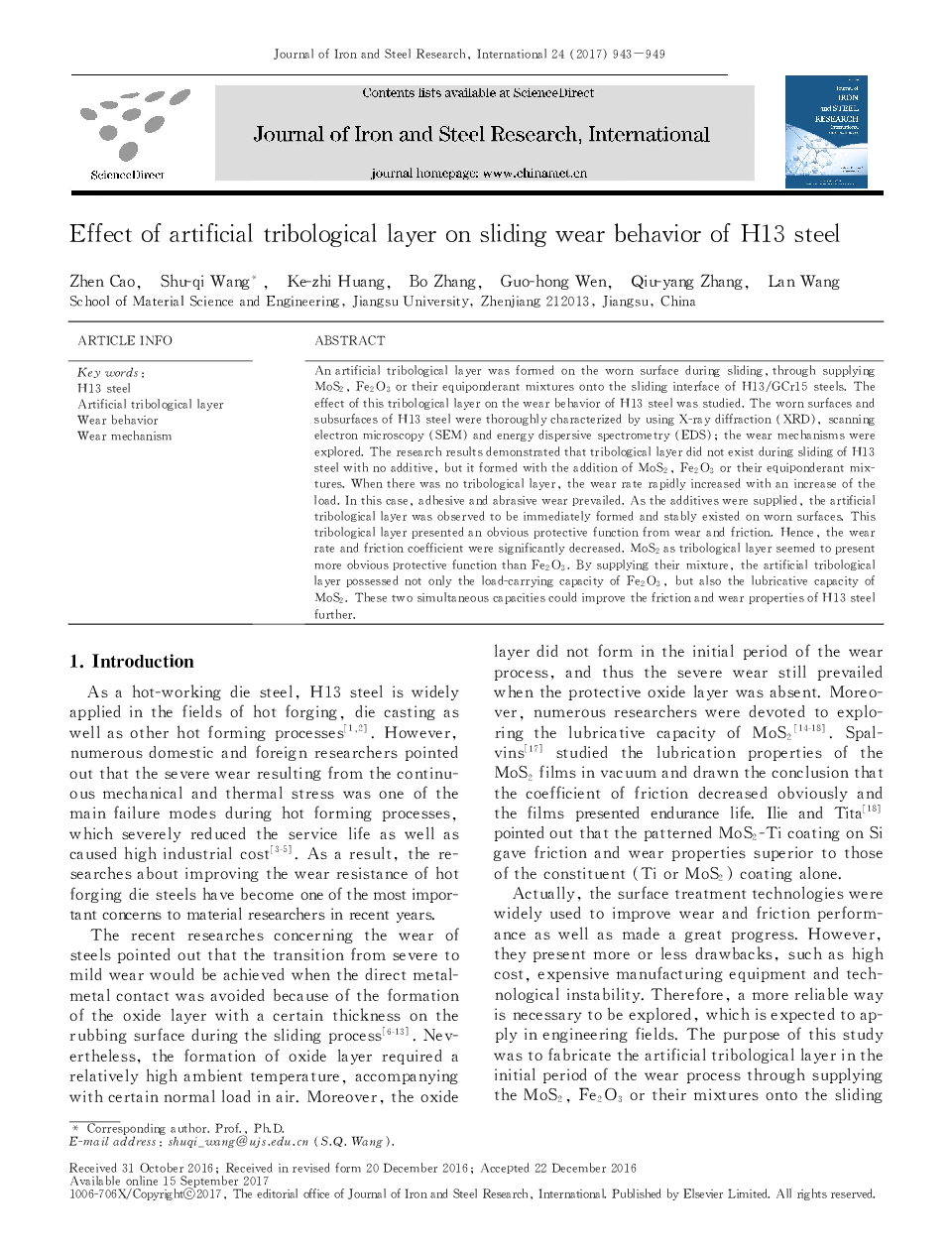| Article ID | Journal | Published Year | Pages | File Type |
|---|---|---|---|---|
| 8004201 | Journal of Iron and Steel Research, International | 2017 | 7 Pages |
Abstract
An artificial tribological layer was formed on the worn surface during sliding, through supplying MoS2, Fe2O3 or their equiponderant mixtures onto the sliding interface of H13/GCr15 steels. The effect of this tribological layer on the wear behavior of H13 steel was studied. The worn surfaces and subsurfaces of H13 steel were thoroughly characterized by using X-ray diffraction (XRD), scanning electron microscopy (SEM) and energy dispersive spectrometry (EDS); the wear mechanisms were explored. The research results demonstrated that tribological layer did not exist during sliding of H13 steel with no additive, but it formed with the addition of MoS2, Fe2O3 or their equiponderant mixtures. When there was no tribological layer, the wear rate rapidly increased with an increase of the load. In this case, adhesive and abrasive wear prevailed. As the additives were supplied, the artificial tribological layer was observed to be immediately formed and stably existed on worn surfaces. This tribological layer presented an obvious protective function from wear and friction. Hence, the wear rate and friction coefficient were significantly decreased. MoS2 as tribological layer seemed to present more obvious protective function than Fe2O3. By supplying their mixture, the artificial tribological layer possessed not only the load-carrying capacity of Fe2O3, but also the lubricative capacity of MoS2. These two simultaneous capacities could improve the friction and wear properties of H13 steel further.
Keywords
Related Topics
Physical Sciences and Engineering
Materials Science
Metals and Alloys
Authors
Zhen Cao, Shu-qi Wang, Ke-zhi Huang, Bo Zhang, Guo-hong Wen, Qiu-yang Zhang, Lan Wang,
